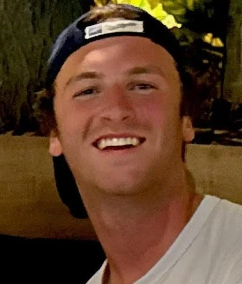


April 12, 2017 Press Contacts Laura Green Communications Manager 202.314.1783 [email protected] Museum Press Kit U.S. HOLOCAUST MEMORIAL MUSEUM FORECASTS COUNTRIES AT HIGHEST RISK OF COMMITTING NEW ATROCITIES Annual list highlights nations where engagement can save lives WASHINGTON – For the third year in a row, Sudan and Burma rank among the countries at greatest risk […]
The post Museum Forecasts Countries at Highest Risk of Committing New Atrocities first appeared on Social Gov.

April 12, 2017
U.S. HOLOCAUST MEMORIAL MUSEUM FORECASTS COUNTRIES AT HIGHEST RISK OF COMMITTING NEW ATROCITIES
Annual list highlights nations where engagement can save lives
WASHINGTON – For the third year in a row, Sudan and Burma rank among the countries at greatest risk of experiencing a new episode of state-led mass killing, according to annual rankings released today by the United States Holocaust Memorial Museum and the Dickey Center for International Understanding at Dartmouth College.
The latest assessment comes as increased violence against the Rohingya, a Muslim minority in Burma, puts them at risk of genocide. Despite Burma’s progress toward democracy, recent reports of murder, widespread rape and destruction of villages by security forces targeting Rohingya are further evidence that long-term persecution in northern Rakhine State has erupted into mass atrocities. Burma ranks number three on our annual list.
Sudan ranks number one on our list with an estimated 7% chance of a new mass killing episode. The country continues to bear many of the markers of nations that have committed mass killings in the past, including a high risk of a coup attempt or civil war that could lead the government to lash out at its own people.
Sudan, Yemen, Burma, Nigeria and Afghanistan make up the top five countries facing the greatest risk of new cases of civilian atrocities at the hands of their governments.
“After a decade of decline, civilian mass killings by governments against their own people are once again on the rise,” said Cameron Hudson, director of the Simon-Skjodt Center for the Prevention of Genocide. “By combining the power of analytics with the growing body of social science around mass killing onsets, we hope to galvanize preventive actions to avoid these outcomes.”
In Burundi, where the United Nations has documented sexual violence, torture and “genocidal rhetoric” by the government, the Early Warning Project offers compelling empirical indicators that the government is at risk of committing mass killing. Political turmoil catapulted the country from 56th in 2015 to 6th in 2016, with its estimated risk now topping 4%.
The Early Warning Project is built on the belief that genocide is preventable. It seeks to save lives by helping policymakers, activists and affected communities understand and prioritize where to direct limited prevention resources to prevent new mass atrocities. Because mass killings are rare – with fewer than two onsets on average per year – even the highest risk countries have less than a one-in-ten chance of having a new case, according to our analysis.
The system forecasts risks using public data and advanced methodologies built on 50 years of historical indicators to highlight cases where mass atrocities have not started but where warning signs are detected. Our annual rankings are based on the latest available data, from 2015.
Learn more about the Early Warning Project.
A living memorial to the Holocaust, the United States Holocaust Memorial Museum inspires citizens and leaders worldwide to confront hatred, prevent genocide and promote human dignity. Its far-reaching educational programs and global impact are made possible by generous donors. For more information, visit ushmm.org.
The United States Holocaust Memorial Museum’s Simon-Skjodt Center for the Prevention of Genocide is dedicated to ensuring that governments have the structures and tools to prevent genocide and to catalyze an international response when it occurs. Its goal is to make the prevention of genocide a core priority for leaders around the world through a multipronged program of research, education and public outreach. It works to equip decision makers, in the United States and abroad, with the knowledge, tools and institutional support required to prevent – or if necessary, halt – genocide and related crimes against humanity.
###
Tags:
Content from United States Holocaust Memorial Museum
Originally published at https://www.ushmm.org/information/press/press-releases/museum-forecasts-countries-at-highest-risk-of-committing-new-atrocities
The post Museum Forecasts Countries at Highest Risk of Committing New Atrocities first appeared on Social Gov.
originally published at HUMAN RIGHTS - USA DAILY NEWS 24

